I was very late to anime, manga and, specifically, Naruto.
My previous exposure to Japanese animated stories was very limited and I think fairly typical for someone my age growing up in the UK: I’d seen a couple of Ghibli films, had watched Akira and Ghost in the Shell, had watched in perplexment at university while housemates watched Urotsukidoji on late-night TV. I had a weird, badly edited ‘movie’ version of Robotech on VHS that made no sense.
My son’s growing interest in anime and manga began about four years ago, starting with Pokemon and the Legend of Zelda manga adaptations. At some point Naruto entered the scene, and as he was only 10 years old we thought we’d better watch the show with him to make sure it was suitable.
There have been a handful of shows I’ve watched with my son that have become legit, unironic favourites of mine. The remakes of Voltron and She-Ra and the Princesses of Power, the latter of which was an influence on the development of my own Triverse series (and sent me down a very rewarding rabbit hole to discover
’s other fine work). The Star Wars Clone Wars and Rebels series, which are very uneven but have real high points. All of these I’d never have watched without having a small child.As his interest in manga increased, so did mine. I binged read the entire Attack on Titan, and we embarked upon watching Naruto.
I wasn’t prepared for Naruto to end up being one of my top five shows of all time, yet here we are. Along the way, it taught me new approaches to writing serial fiction and upended all of my thoughts around story pacing and world building.
I’ll be avoiding any major spoilers in this piece.
Flashback storytelling
One aspect of the Naruto anime that I struggled with for most of the first season was its reliance on flashback storytelling Every other episode, seemingly, the narrative would fork into a retrospective on a particular character, often an antagonist. It’s a highly disruptive way of telling a story, in which it constantly interrupts itself.
In the middle of a tense fight? Let’s stop the action to spend an entire episode or two exploring events that took place a decade earlier. It takes show-not-tell to the extreme: what could be a single line of expository dialogue is expanded to entire scenes. The backstory for Haku and Zabuza, for example, in season 1.
I’ve always had the understanding that flashbacks are a lazy form of storytelling. Whether this is something I was actually taught in my student days or simply something I’ve picked up when observing it done poorly in UK/US stories, it took me quite some time to get over my preconception.
The flashbacks in Nartuo become ever more effective at recontextualising scenes and characters, building a puzzle box of a narrative that leans heavily on unreliable narrators and scarcity of information. Everything fits together, and we’re slowly given the pieces, but the whole picture only comes into focus late in the game.
Creator Masashi Kishimoto uses flashbacks as empathy engines, deployed especially effectively to add dimensions to villains. Over and over we’re privy to the origin stories of horrendous people, only to realise that they had clear motivations and possibly even noble intensions. The story of Sasori is a case in point, shifting the character from terrifying to tragic, without ever undermining his threat or corruption.
That’s why it works: the flashbacks are not there for exposition or plot (although they do that, too, of course), but to deepen understanding of character. The plot of Naruto is wide, but the character explorations are deep.
Of course, I’ve only seen the anime. Reading the manga is next on my list, and I’m intrigued to find out whether it employs the same overall narrative structure.
Verbose narration and time-warped dialogue
Another storytelling tool which I was always told was lazy and to be avoided was the voiceover. Sure, film noirs from the 40s and 50s could get away with it, but otherwise it was a narrative crutch borrowed from novels, a lazy shortcut to a character’s internal state that bypassed the unique characteristics of a visual medium like film.
Naruto is absolutely chock-full of voiceover, inner monologues and lengthy ponderings on the current situation. Again, it took me a while to get over my prejudices, stop judging and open myself up to new ways of telling a story. Entire episodes would be taken up with a character trying to figure their way out of a tricky situation, narrating their way through it, even while in the middle of a frenzied battle.
Baddies politely stand off to one side while characters held a meeting and discussed their predicament. A 20-minute episode can end up covering about 30 seconds of real-time action, filled with flashbacks and internal thoughts.
It all clicked into place once I realised that the action sequences were, in fact, puzzles.
Action-as-puzzles
There’s a rock-paper-scissors design to much of Naruto, such that even as the character become increasingly powerful, to the point of seeming to be plot-breaking, there’s always a counterpoint to keep things in check. There are limits to everything, even as the plot and character abilities take ever more fanciful and unprecedent leaps.
As each foe is faced, the question for the characters and the audience is how Naruto and his ninja pals are going to get out of this one. Somehow, despite the very loosely defined jutsu/magic system, it does tend to hold together in a logical, cohesive way. As each enemy is dispatched (or not), it feels earned and justified. While on the surface the power levels seem absurdly heightened, in fact everything has built-in checks and balances.
I kept expecting it to jump the shark or go entirely off-balance, but it never did. Through to the end, the show maintained its verisimilitude.
Mad but somehow coherent world building
Talking of which, can I take a moment to marvel at the freewheeling world building? This is a fictional alternate Japan (sort of?) in which it’s mostly a pre-industrialised society, except for when there are towering industrial factory cities, or occasional TV screens or computers, or advanced medical equipment.
There are stories all about travelling from one village to another, by foot, because there’s no mechanised transport. It’s a largely agrarian society, except for when it is suddenly not. Sometimes the intelligence shinobi don virtual reality headsets to telepathically communicate with one another. One character has rocket-powered grenade arms. Another wears a 20th century-style gas mask.
There’s a looseness to the world building that I found at first jarring, then shifted towards a grudging respect. There’s a boldness here, where the world building is entirely in service of the needs of the story at any given moment in time. Naruto is not slavish to its own lore. It plays with it, it has fun. Much of the technology makes no sense whatsoever, but it really doesn’t matter to the story that is being told.
It’s oddly refreshing, and really challenged my assumptions about how a story can maintain its own internal coherence. Creator Masashi Kishimoto I would say prioritises characters and thematic resonance over consistent world building: if it benefits the story to include modern hospital equipment in an otherwise pre-industrial society, fine. It doesn’t make a huge amount of sense, but there’s a recognition that this particular story is not about those details.
I’m still surprised that it didn’t frustrate me more, though. Going back to the Harry Potter films, it drove me mad that magical tech and plot conveniences and world-changing powers would be introduced and forgotten with no regard for impact on the rest of the story.1 In Harry Potter it felt arbitrary and lazy; in Naruto it feels deliberate, possibly because the tech is usually an aesthetic choice rather than a plot solver. The story does not pivot around the technology on display. It’s flavour rather than formula.
Generational scope, enormous cast
The lead characters are children, beginning as pre-teens. Naruto, Sasuke and Sakura are thrust into a world in conflict, one that’s been repeatedly let down and corrupted by previous generations. The story of Naruto is one of generational disappointment, of how our parents and our parents’ parents have presided over a disintegrating civilisation.
Naruto and his classmates are forced to rebel against adults and strive to correct the mistakes of the past. None of what happens is their fault, but they shoulder the responsibility of doing something about it. It’s an inherently optimistic series, but one where the weight of action is placed upon children and teenagers.
The adults have messed up, and those able to recognise their own flaws — Kakashi, Juraiya, Tsunada — increasingly look to the younger generation for answers and salvation.
This works thanks to the length and depth of the series. Even discounting the ‘filler’ episodes, which bulk out the anime compared to the manga, it’s an epic tale. It finds time to explore the adults even while condemning their decisions. Crucially, we see all of them as children, back when they were as idealistic and hopeful as Naruto and his friends — again, the flashback structure is used here to expert effect, rather than as a crutch. The adults are not flawed simply because they are old: we see their mistakes and mis-steps, and understand how easy it is to lose sight of the dreams and hopes of youth. The challenge, especially for Naruto and Sasuke, is to not repeat those errors.
The story spans at least three generations. There’s a core cast of well over twenty characters. It’s epic in scale by every measurement. Every piece, though, every character, has a purpose and slots into the overall puzzle, becoming more than the sum of its parts as each piece connects.
I kept expecting the story to get tangled up in its own complexities, to become either nonsensical or contradictory, but it maintains its centre of gravity. Much like Attack on Titan, the impression is of an author who did indeed work everything out in advance. Whether that’s the case or not I don’t know — it’s entirely possible that they were making it up as they went. But as with other great serial storytellers, like J. Michael Straczynski with Babylon 5 back in the 90s, the seams disappear and the finished story feels like it was always supposed to be that way.
Astonishing tonal shifts
Many of my favourite writers are those who are able to hop between different tones and styles without any of them undermining the others. There’s a playfulness to it, to not being slavish to genre or audience expectations.
Naruto does this effortlessly, flipping between silly slapstick comedy, juvenile kids show, moving treatise on war, thrilling action, shades of horror, family drama…much as the world building remains loose and agile throughout, so does the plot and the tone. It’s happy to become whatever it needs to be, to best serve the story.
It’s breathtaking in its boldness, in its refusal to be nailed down to a particular style or formula.
Talking of which:
Entire episodes about grief
I was enjoying the show immensely fairly early on, but there’s a specific episode which made me realise that I was underestimating it. Episode 80, to be precise. Without getting into spoiler specifics, it’s an episode that focuses on grief and a funeral, and it sticks with that throughout, unapologetically, slowing the usual pace down to a crawl and exploring what death means to the different characters.
It’s about consequence, and regret, and sacrifice, and it’s not at all what I expected from ‘a show for kids’. It’s when I realised that the writing was better than I’d appreciated, and that the show was interested in doing more than I’d acknowledged. I’d taken it to be a really fun, inventive action-comedy series, and was enjoying watching it with my son immensely. It was episode 80 that shifted my relationship with the show: I was no longer watching it as a nice family activity, and to share something with my son, but I was watching it on its own merits.
Little did I know that Naruto had a lot more to say about life, parenting, death. I was not prepared for what was to come. Was not expecting the depth and sophistication of where the story was going to go.
Those character designs
A quick note about the character designs, which are brilliant across the board. And there are so many of them! It slightly breaks my brain to imagine so many unique and compelling characters coming from one creator’s brain (plus additional characters from the minds of the anime creators).
The cast is instantly iconic, and somehow straddles the gap between realism and stylised cartoon. For the most part there’s a physicality and a realistic depiction of anatomy, except for when there isn’t. Again, it’s that tonal flexibility: the show is a gymnast, flipping from one style to another without losing track of what makes it Naruto.
Ridiculous levelling up of power (without breaking the story)
Comics and cartoons and genre stories have always had a problem with endless scaling of threat and power. Marvel comics and movies escalate both the threat and the heroes’ abilities until the stories start falling over, and everything has to be reset. James Bond films get increasingly outlandish until they collapse beneath their own absurdity and have to be rebooted. Anime is often poked fun at for characters always having one more ‘levelling up’ ability in their back pocket.
Naruto should fall into that trap, but somehow sidesteps it. It’s that rock-paper-scissors puzzle aspect, I think. Powers always have limits, always have counters, and are rarely easy ‘get out of jail’ cards.
Much as with the world building and tonal shifting, it challenged my conception of what is possible with a story. As I approach the final arc of Tales from the Triverse, my own long-running, 4-year weekly serial, I’ve kept the extremes of Naruto in the back of my mind. Where I might have held back or resisted certain storylines or developments, I have a newfound confidence to go for the big swings.
My concept of the boundaries of stories have been fairly obliterated by the experience of watching Naruto. It’s a demonstration of how you can go big without losing the emotional heart and character of a story.
The manga is next on my list. Believe it.
This is based on the movies. I’ve not read the books.


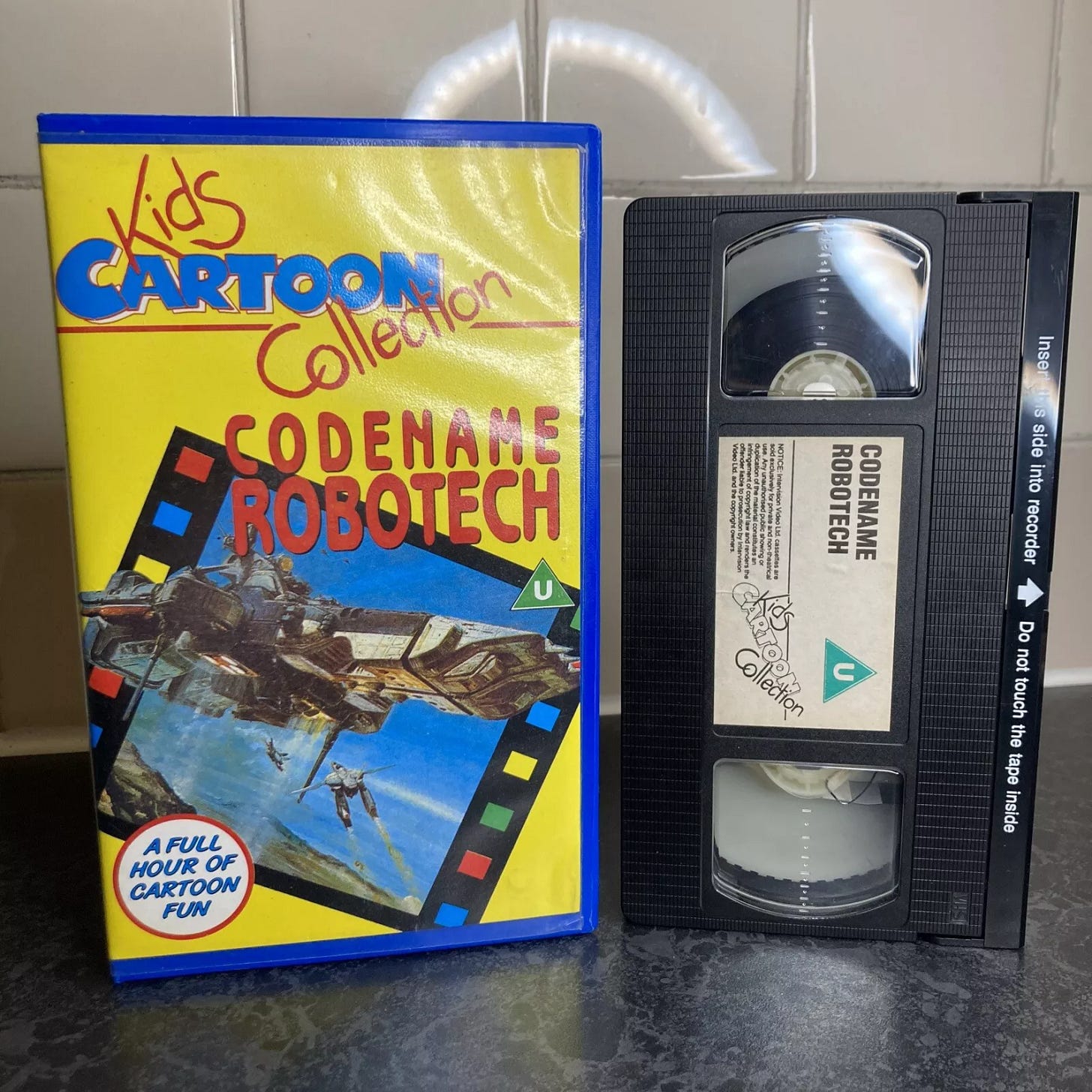
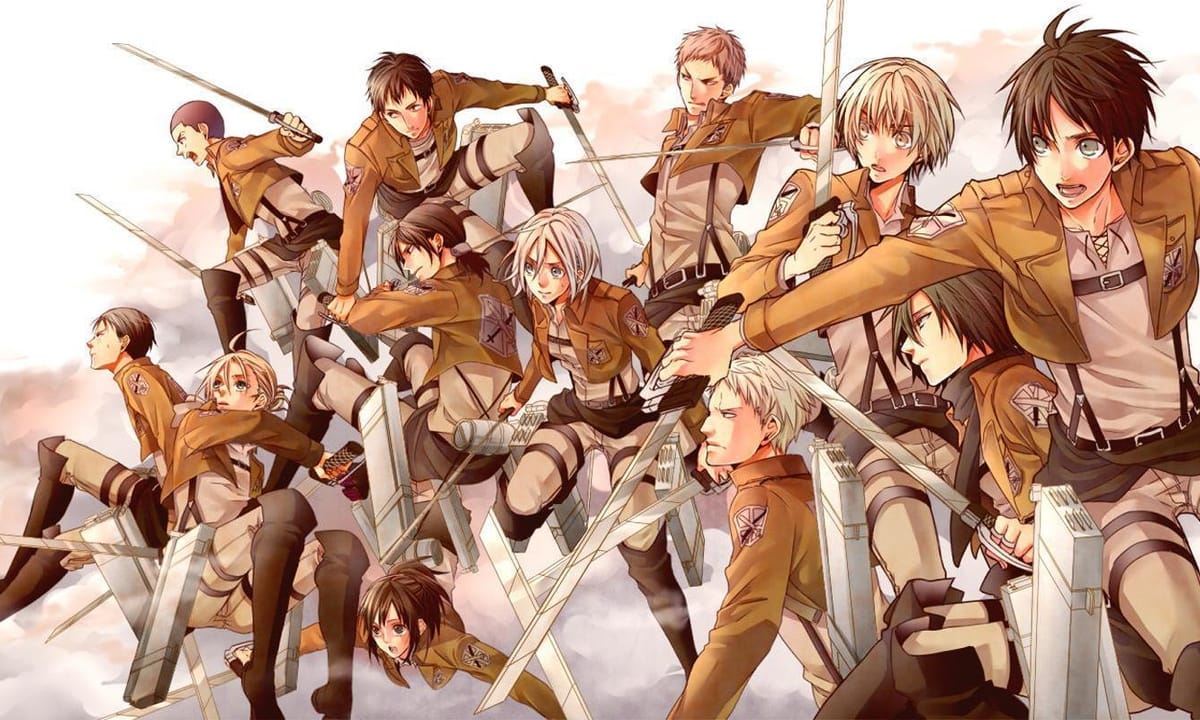
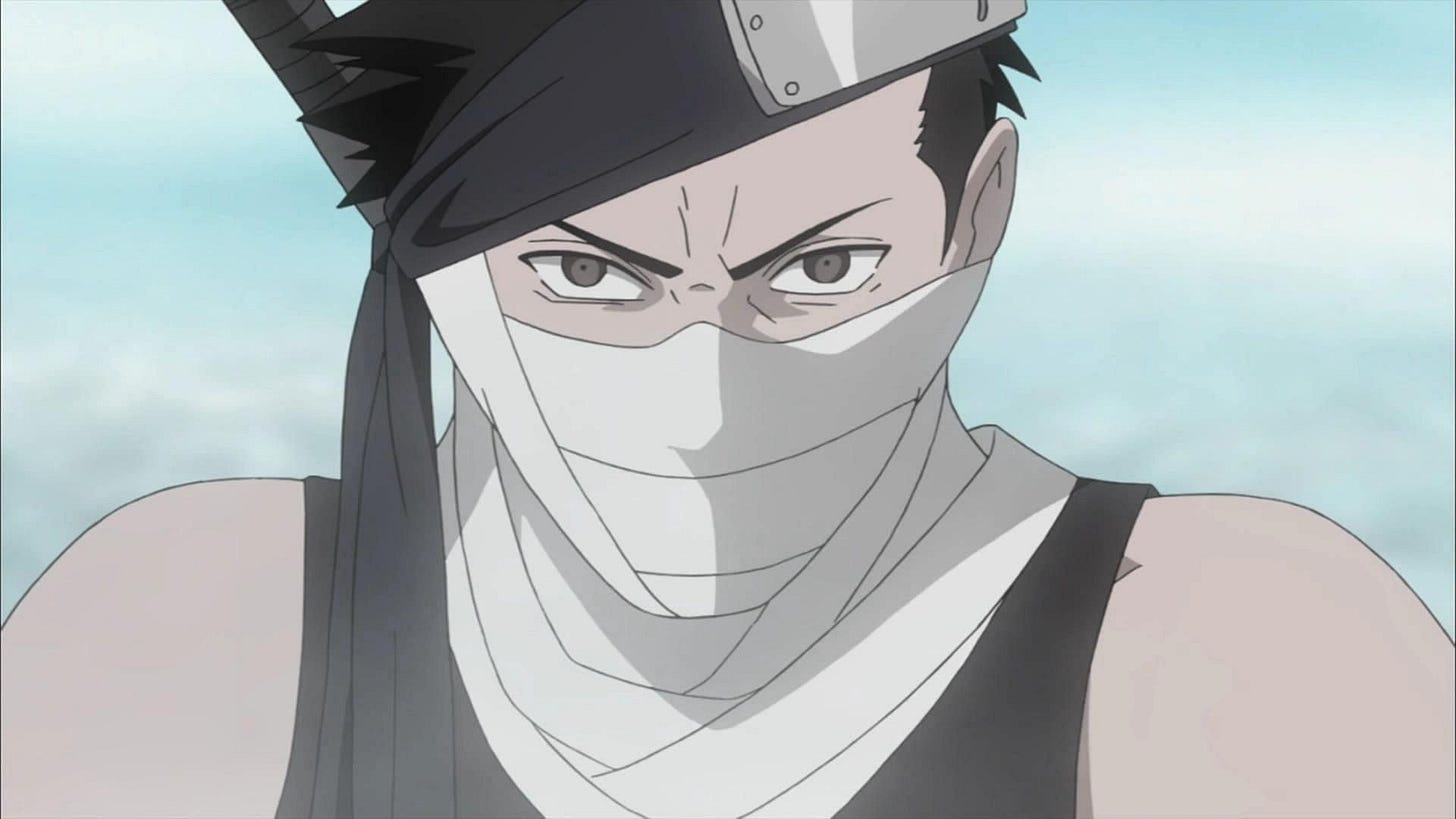
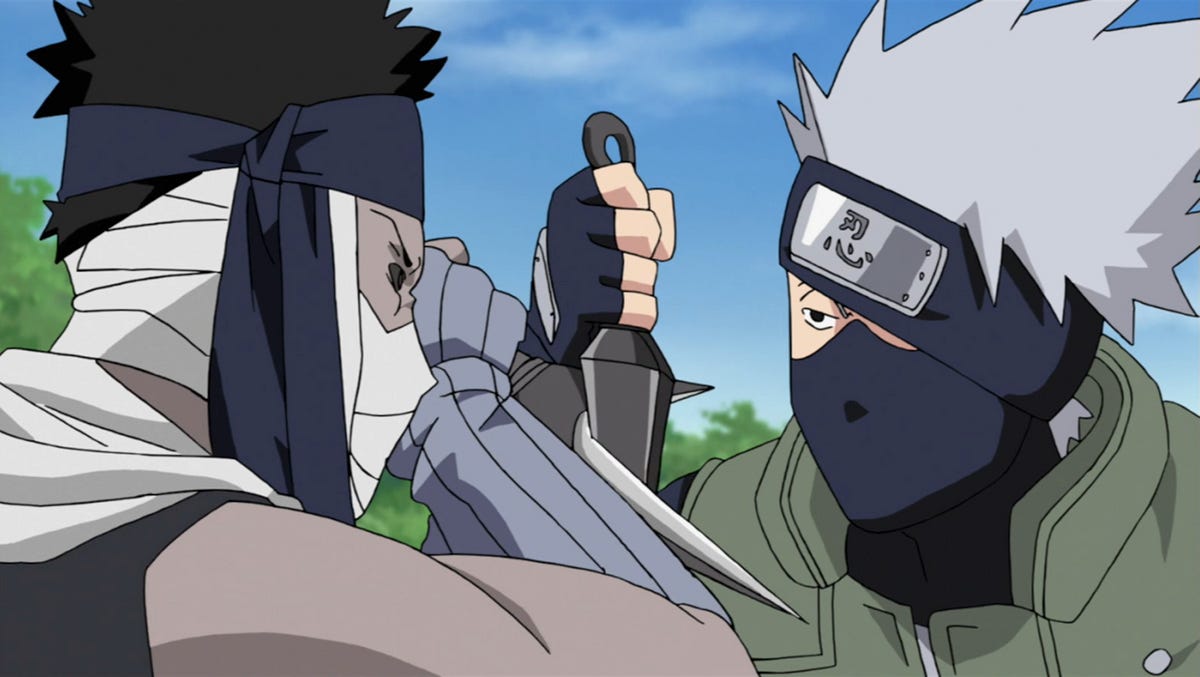
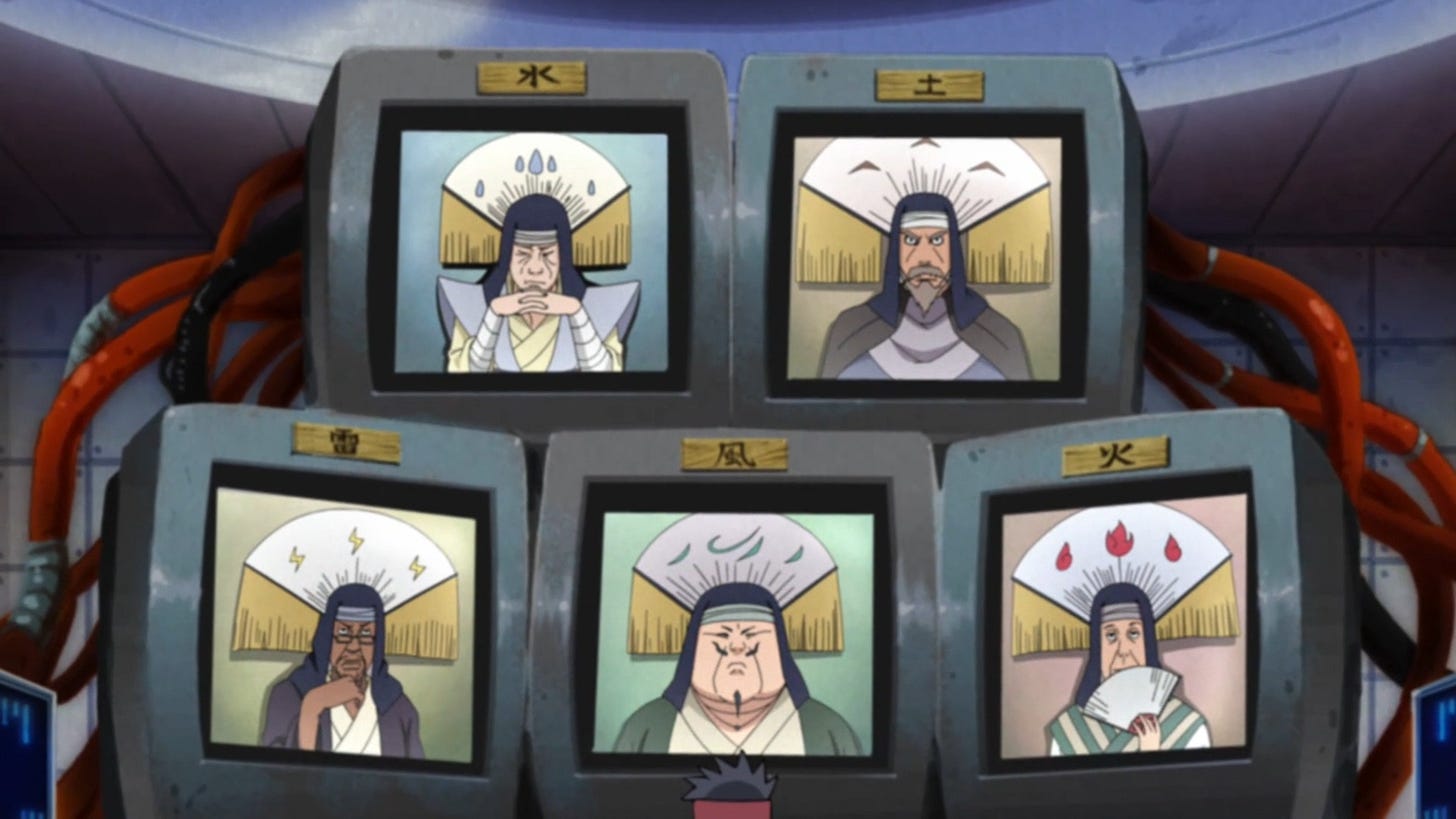
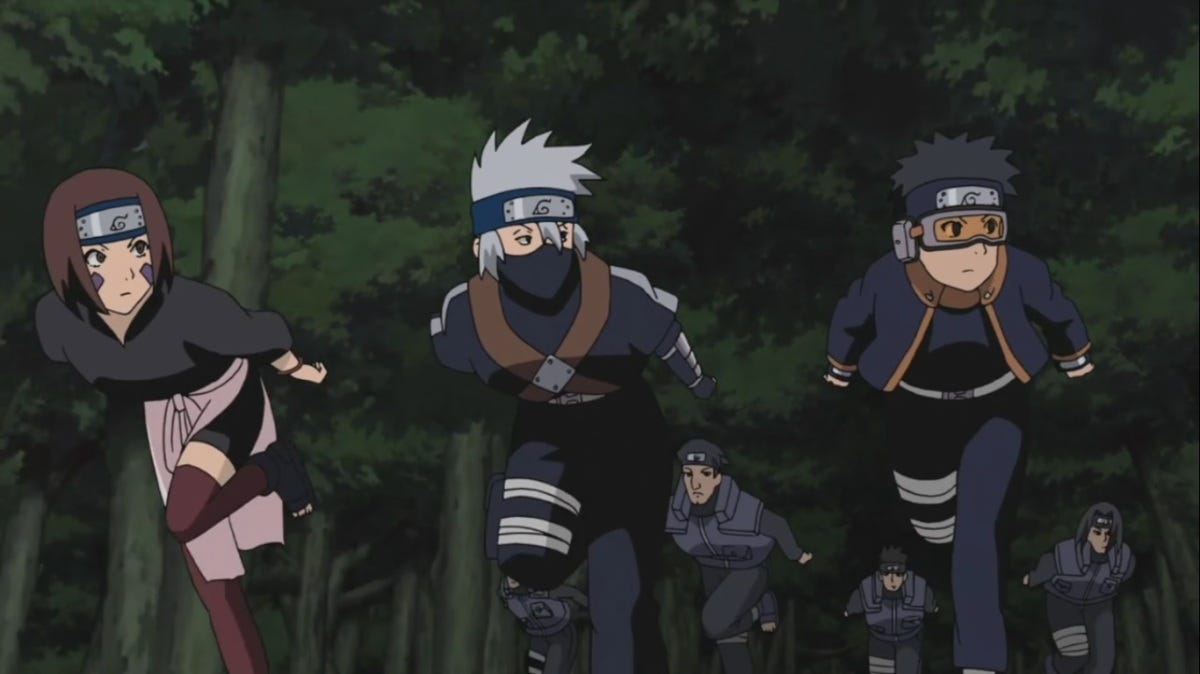
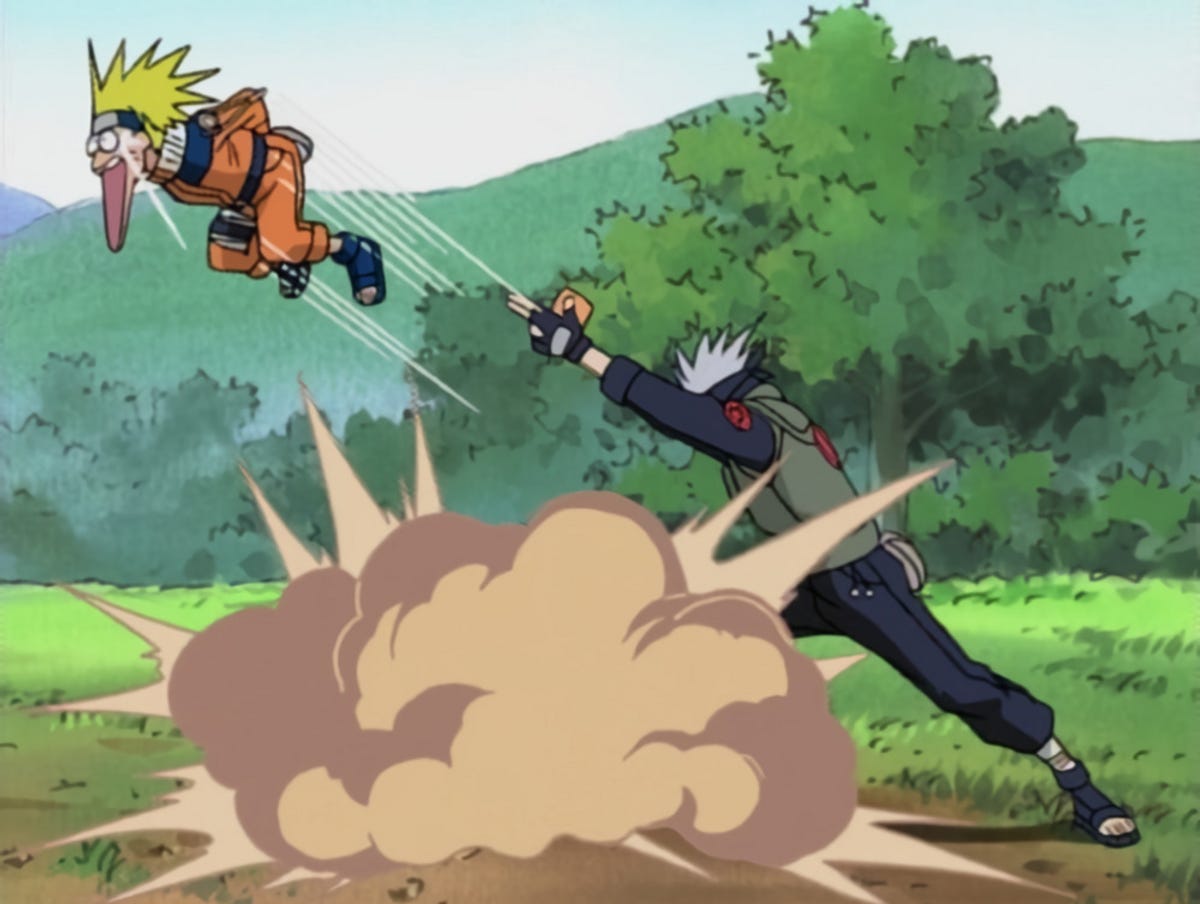
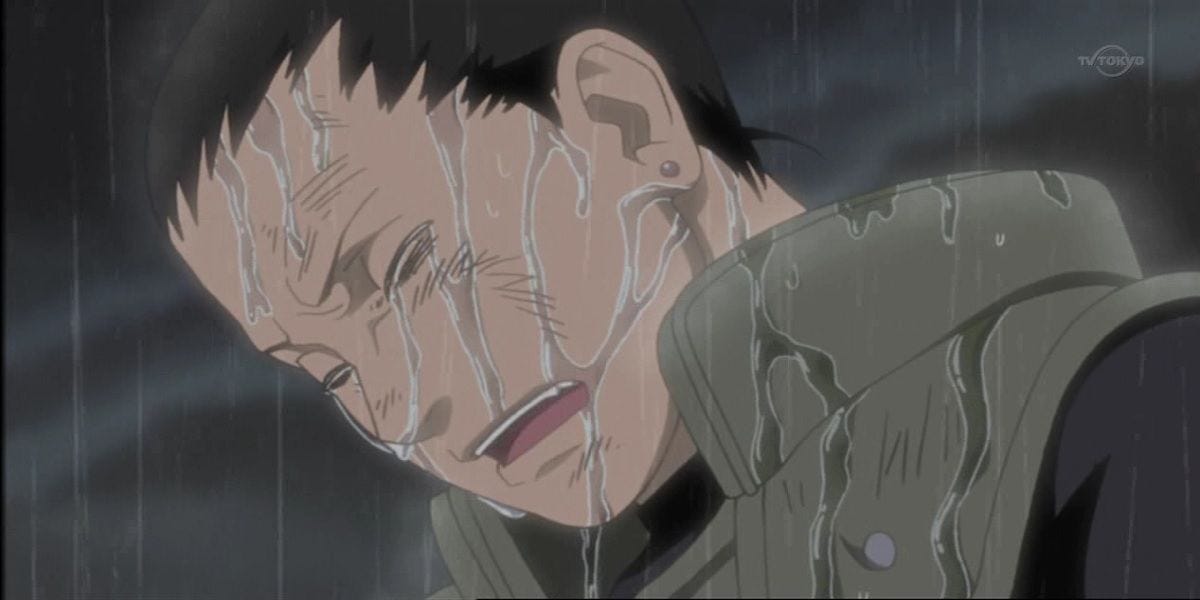
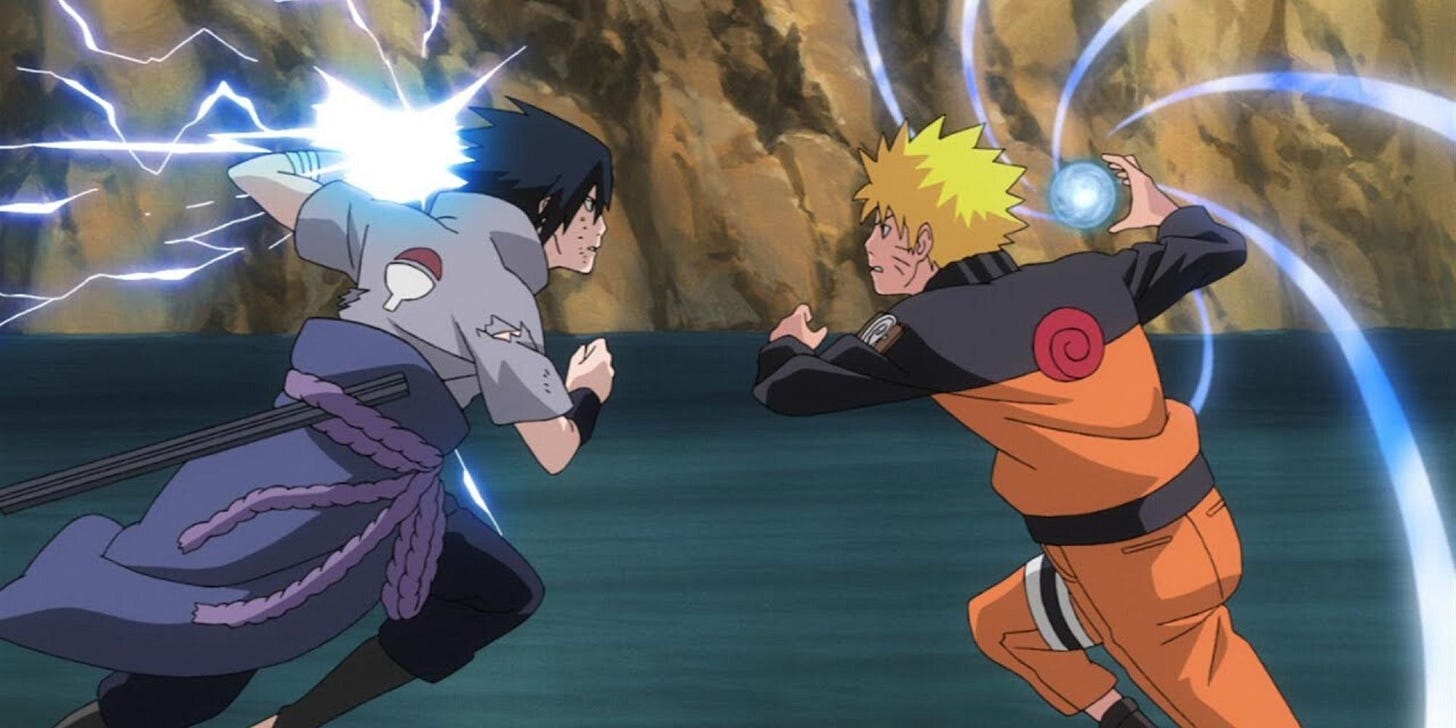
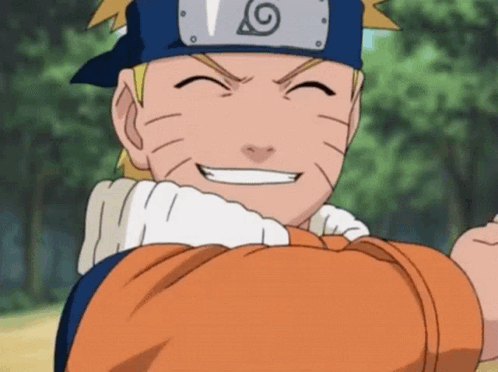
I need to go back and play the Naruto games that I never got around to on gen 7. Add it to my list.
Naruto has had a special place in my heart since I first saw it air on toonami. I'm glad you gave it a fair shot with your son. I'm sure doing that means the world to him. <3 I loved the thoughtfulness of this piece, and really appreciate your perspective on the flashbacks!